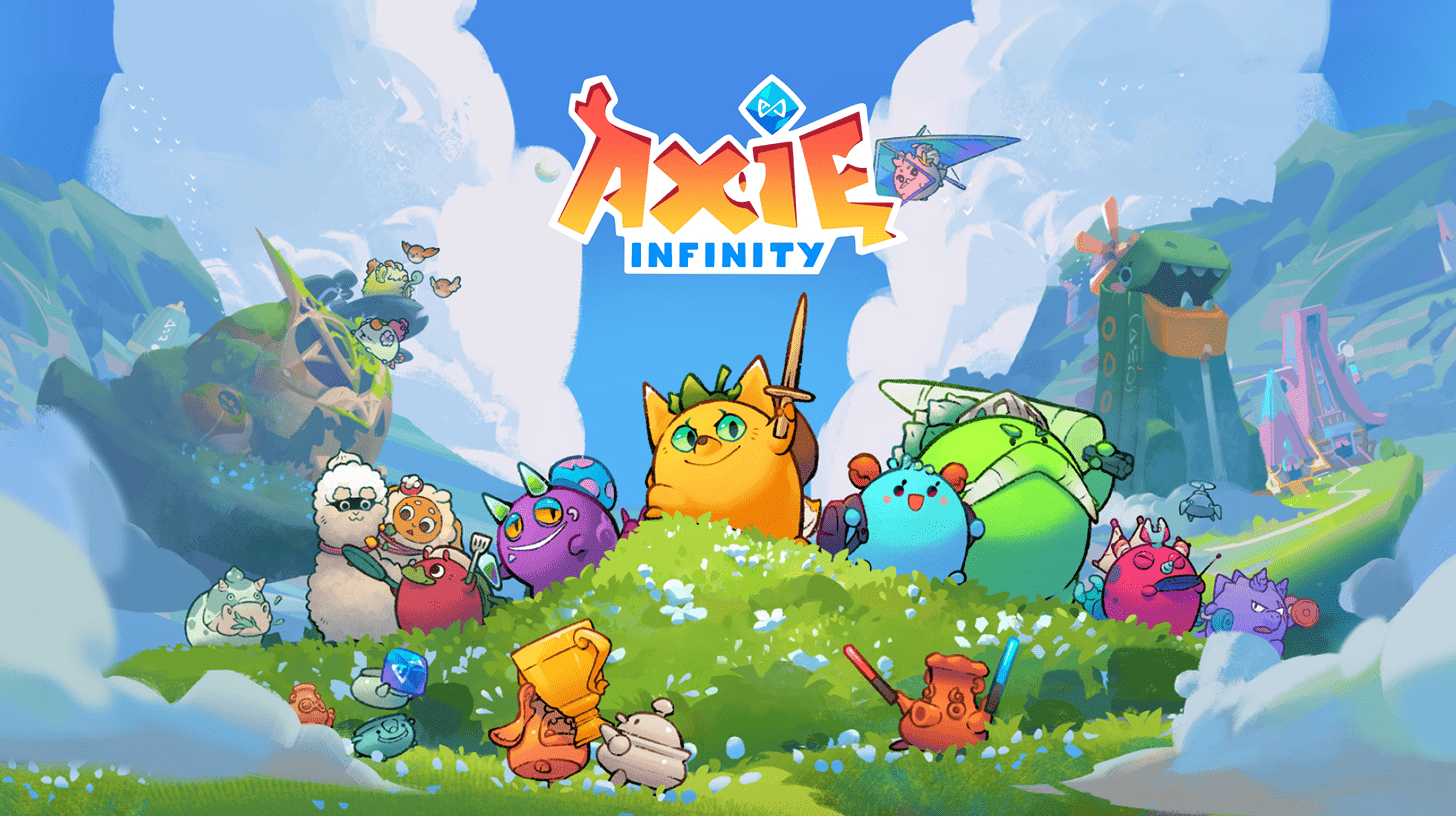The Impact of Crypto Games on the Gaming Industry: A Paradigm Shift

The gaming industry has undergone significant evolution over the past few decades. From the early days of simple arcade games to the current era of sophisticated, immersive experiences, gaming has continually adapted to technological advancements and changing consumer preferences. The rise of online multiplayer games, mobile gaming, and virtual reality has each marked pivotal moments in this evolution. Today, we stand on the brink of another transformative shift with the emergence of crypto games.
Crypto games, which integrate blockchain technology and cryptocurrencies, have introduced a new dimension to gaming. Unlike traditional games, where players' in-game assets and achievements are confined to the game’s ecosystem, crypto games enable true ownership, tradability, and monetization of digital assets. This innovation allows players to earn real-world value from their in-game activities, creating a seamless blend of entertainment and financial opportunity.

Understanding Crypto Games
Crypto games, also known as blockchain games, are digital games that incorporate blockchain technology to enable the use of cryptocurrencies and non-fungible tokens (NFTs) within the gaming environment. These games leverage decentralized networks to create verifiable digital scarcity, true asset ownership, and secure transactions. Key characteristics of crypto games include:
- True Ownership
Players have actual ownership of in-game assets, represented as NFTs, which can be traded or sold outside the game.
- Play-to-Earn Mechanisms
Players can earn cryptocurrency by participating in the game, completing tasks, or winning battles.
- Decentralized Marketplaces
In-game items and assets can be bought, sold, and traded on decentralized marketplaces, giving players real economic incentives.
- Interoperability
Assets from one game can often be used in another game, creating a broader ecosystem and more value for players.
Differences Between Traditional Games and Crypto Games
The integration of blockchain technology sets crypto games apart from traditional games in several significant ways:
- Asset Ownership
In traditional games, in-game assets are typically owned and controlled by the game developers. Players can use these assets only within the game's ecosystem and have no real ownership. In contrast, crypto games allow players to own their in-game assets as NFTs, which can be traded or sold independently of the game.
- Economic Models
Traditional games often rely on centralized economic models, with revenue generated through in-game purchases, subscriptions, or advertisements. Crypto games introduce decentralized economic models, where players can earn and trade cryptocurrencies, creating new revenue streams and financial opportunities.
- Security and Transparency
Blockchain technology ensures that all transactions and asset ownership are secure and transparent. This reduces the risk of fraud and provides players with greater confidence in the integrity of the game.
- Interoperability
Traditional games operate in closed ecosystems, with assets and progress confined to a single game. Crypto games promote interoperability, allowing assets to be used across multiple games and platforms, enhancing their value and utility.
Overview of Blockchain Technology in Gaming
Blockchain technology plays a crucial role in the functioning of crypto games. Here’s how it works in the gaming context:
- Decentralization
Blockchain operates on a decentralized network of computers (nodes) that maintain a shared ledger. This decentralization ensures that no single entity has control over the entire network, promoting fairness and security.
- Smart Contracts
Smart contracts are self-executing contracts with the terms directly written into code. They facilitate, verify, and enforce the negotiation and execution of transactions, ensuring that all parties adhere to the agreed-upon rules without the need for intermediaries.
- Non-Fungible Tokens (NFTs)
NFTs are unique digital assets that represent ownership of specific items or content within the game. Each NFT is distinct and cannot be exchanged on a one-to-one basis with another NFT, making them ideal for representing rare in-game items, characters, or achievements.
- Cryptocurrencies
Cryptocurrencies, such as Bitcoin and Ethereum, are used as the primary medium of exchange within crypto games. Players can earn, spend, and trade these digital currencies, creating a real-world economic layer within the gaming experience.
Crypto games leverage blockchain technology to create a new gaming paradigm characterized by true ownership, economic opportunities, and enhanced security. By understanding these fundamental differences and technological underpinnings, we can better appreciate the transformative potential of crypto games in the broader gaming industry.

Economic Impact
The emergence of crypto games has introduced new economic dynamics within the gaming industry, creating additional revenue streams for both developers and players and paving the way for innovative economic models.
New Revenue Streams for Developers and Players
Crypto games have opened up various new revenue opportunities:
- For Developers
Developers can monetize their games through the sale of NFTs, transaction fees on decentralized marketplaces, and the creation of in-game economies powered by cryptocurrencies. This allows them to generate ongoing revenue from player transactions and interactions, rather than relying solely on one-time purchases or subscription models.
- For Players
Players can earn real-world value by participating in crypto games. By acquiring and trading NFTs, earning cryptocurrency through gameplay, and participating in decentralized finance (DeFi) activities within the game, players can turn their gaming skills and time into financial rewards. This play-to-earn model has democratized earning opportunities, allowing players from diverse backgrounds to benefit financially.
The Rise of Play-to-Earn and Tap-to-Earn Models
The play-to-earn and tap-to-earn models have become defining features of many successful crypto games:
- Play-to-Earn
In this model, players earn cryptocurrency by engaging in various in-game activities, such as completing quests, winning battles, or participating in tournaments. This model incentivizes long-term engagement and rewards players for their time and effort.
- Tap-to-Earn
Tap-to-earn games simplify the earning process by allowing players to earn rewards through simple, repetitive actions, such as tapping the screen. These games often appeal to casual gamers and provide an easy entry point into the world of crypto gaming. By accumulating points or tokens through tapping, players can eventually exchange them for cryptocurrency.
Case Studies of Successful Crypto Game Economies
Several crypto games have demonstrated the economic potential of integrating blockchain technology:

Axie Infinity
Axie Infinity has created a thriving in-game economy where players breed, battle, and trade fantasy creatures called Axies. Each Axie is an NFT, and players can earn Smooth Love Potion (SLP) tokens through gameplay. The game's native token, AXS, has appreciated significantly, providing additional financial incentives for players. Axie Infinity has generated millions in revenue for both its developers and players, showcasing the viability of the play-to-earn model.

Decentraland
Decentraland is a virtual world where players can purchase, develop, and monetize parcels of virtual land. These land parcels are represented as NFTs and can be traded on decentralized marketplaces. Players can build attractions, host events, and create businesses within Decentraland, generating income from their virtual real estate. This game illustrates the potential for creating real-world economic value through virtual assets.

CryptoKitties
One of the earliest examples of a successful NFT-based game, CryptoKitties allows players to collect, breed, and trade unique digital cats. Each CryptoKitty is an NFT with distinct attributes and rarity levels. The game's initial success led to high trading volumes and significant media attention, highlighting the potential for NFT-based economies in gaming.
The economic impact of crypto games is profound, offering new revenue streams for developers and players through innovative models like play-to-earn and tap-to-earn. Successful case studies demonstrate the transformative potential of these games, paving the way for a more inclusive and financially rewarding gaming industry.

Technological Advancements
The integration of blockchain technology into gaming has led to numerous technological advancements, enhancing the gaming experience and creating new possibilities for both developers and players.
Integration of Blockchain Technology in Gaming
Blockchain technology provides a decentralized and transparent framework that is highly beneficial for gaming. By integrating blockchain, games can offer enhanced security, verifiable ownership of digital assets, and a decentralized economy.
- Decentralization
Blockchain eliminates the need for a central authority, ensuring that no single entity controls the game’s economy or assets. This decentralization promotes fairness and transparency, as all transactions are recorded on a public ledger.
- Security
The immutable nature of blockchain ensures that all data, including in-game transactions and ownership records, is secure and cannot be tampered with. This high level of security is crucial for maintaining player trust and protecting digital assets.
The Role of Smart Contracts and NFTs
Smart contracts and non-fungible tokens (NFTs) are two key components of blockchain technology that have revolutionized the gaming industry.
- Smart Contracts
These are self-executing contracts with the terms of the agreement directly written into code. In gaming, smart contracts automate various processes, such as transferring ownership of assets, executing trades, and distributing rewards. This automation reduces the need for intermediaries and minimizes the risk of fraud.
- NFTs
Non-fungible tokens represent unique digital assets that can be owned, traded, and verified on the blockchain. In gaming, NFTs can represent characters, items, skins, and even virtual land. The unique properties of NFTs ensure that players truly own their digital assets, which can be transferred or sold outside the game’s ecosystem.
Innovations in Gaming Mechanics Enabled by Blockchain
Blockchain technology has enabled several innovative gaming mechanics that were not possible with traditional gaming infrastructure.
- Play-to-Earn Models
These models allow players to earn cryptocurrency by participating in the game. By completing tasks, winning battles, or achieving milestones, players can earn tokens that have real-world value. This model not only enhances player engagement but also provides financial incentives for players to invest time and effort into the game.
- Decentralized Marketplaces
Blockchain enables the creation of decentralized marketplaces where players can buy, sell, and trade in-game assets. These marketplaces operate independently of the game developers, giving players more control over their assets and fostering a player-driven economy.
- Interoperability
Blockchain allows for the creation of interoperable assets that can be used across multiple games. This interoperability means that players can carry their digital assets from one game to another, creating a more cohesive and integrated gaming experience.
- Dynamic and Evolving Game Worlds
Smart contracts enable the creation of dynamic game worlds that can evolve based on player actions and decisions. For example, player-owned assets like virtual land can be developed and customized, impacting the game environment and creating unique experiences for each player.
The integration of blockchain technology in gaming has led to significant technological advancements. The use of smart contracts and NFTs has revolutionized asset ownership and transactions, while new gaming mechanics enabled by blockchain have created more engaging and economically rewarding experiences for players. These innovations are driving the evolution of the gaming industry, making it more decentralized, secure, and player-centric.

Changes in Player Engagement
The integration of blockchain technology and NFTs into gaming has brought about significant changes in how players engage with games. These changes enhance player ownership, foster community-driven development, and increase player investment and loyalty.
Enhanced Player Ownership and Control
Blockchain technology and NFTs provide players with true ownership of their in-game assets. Unlike traditional games, where assets are controlled by the game developers, crypto games allow players to fully own, trade, and monetize their digital possessions.
- True Ownership
Players can own in-game items, characters, and virtual land as NFTs. This ownership means that players have full control over their assets, which can be traded or sold on decentralized marketplaces independently of the game. This shift empowers players, giving them real-world value for their time and effort spent in the game.
- Asset Security
The blockchain ensures that all ownership records are secure and immutable. This security gives players confidence that their assets cannot be duplicated or stolen, further enhancing their sense of ownership and control.
Community-Driven Development and Governance
The decentralized nature of blockchain technology enables community-driven development and governance, fostering a closer connection between developers and players.
- Decentralized Governance
Many crypto games incorporate decentralized governance models, where players can vote on game updates, new features, and other important decisions. This participatory approach ensures that the game evolves in a way that reflects the preferences and interests of its community.
- Player Contributions
Players can contribute to the development of the game by creating content, suggesting improvements, and participating in testing phases. This collaborative environment not only enriches the game with diverse inputs but also strengthens the bond between players and developers.
Increased Player Investment and Loyalty
The economic opportunities and enhanced engagement offered by crypto games lead to increased player investment and loyalty.
- Financial Incentives
The ability to earn cryptocurrency through gameplay provides a strong financial incentive for players to invest their time and resources into the game. This play-to-earn model transforms gaming from a purely recreational activity into a potential source of income, attracting a broader audience and increasing player retention.
- Long-Term Engagement
True ownership of in-game assets encourages long-term engagement. Players are more likely to stay invested in a game where their efforts yield tangible rewards that can be used across multiple games or platforms. This continuity enhances player loyalty and fosters a dedicated player base.
- Community Loyalty
The sense of belonging to a community-driven game strengthens player loyalty. When players feel that their opinions matter and that they have a stake in the game's success, they are more likely to remain engaged and actively participate in the game's ecosystem.
The changes in player engagement brought about by crypto games are profound. Enhanced player ownership and control, community-driven development and governance, and increased player investment and loyalty are transforming the gaming experience. These shifts are making gaming more interactive, rewarding, and inclusive, setting the stage for a new era in the gaming industry.

Challenges and Considerations
While the integration of blockchain technology into gaming offers many benefits, it also presents several challenges and considerations that must be addressed to ensure the sustainable growth and success of crypto games.
Technical Challenges: Scalability, Security, and Interoperability
- Scalability
One of the primary technical challenges facing crypto games is scalability. Blockchain networks, particularly Ethereum, often struggle with high transaction volumes, leading to network congestion and slow transaction times. This can negatively impact the gaming experience, especially for games requiring real-time interactions. Solutions such as Layer 2 scaling technologies and alternative blockchains like Polygon and Solana are being explored to address these issues.
- Security
Ensuring the security of blockchain networks and smart contracts is crucial. While blockchain technology itself is secure, vulnerabilities in smart contracts, wallets, and decentralized applications can be exploited by hackers. Regular security audits, robust encryption, and vigilant monitoring are necessary to protect digital assets and maintain player trust.
- Interoperability
The ability to use NFTs and other digital assets across multiple games and platforms is a key advantage of blockchain gaming, but achieving true interoperability is challenging. Different games and platforms may use various blockchain standards and protocols, making seamless integration difficult. Developing universal standards and protocols is essential for enabling broader interoperability and enhancing the value of digital assets.
Market Risks: Volatility, Speculation, and Economic Stability
- Volatility
The value of cryptocurrencies and NFTs can be highly volatile, driven by market speculation, investor sentiment, and external factors. This volatility can create uncertainty and financial risk for both players and developers. Stablecoin integration and other financial mechanisms can help mitigate some of these risks.
- Speculation
The speculative nature of the NFT market can lead to price bubbles, where assets are traded at inflated prices far beyond their intrinsic value. When these bubbles burst, it can result in significant financial losses for players and investors. Encouraging responsible investment practices and focusing on the utility and functionality of NFTs can help reduce speculative risks.
- Economic Stability
Maintaining a stable and balanced in-game economy is crucial for the long-term success of crypto games. Over-reliance on play-to-earn models can lead to inflationary pressures and economic instability if not properly managed. Developers need to implement balanced economic mechanisms that ensure sustainable growth and player engagement.
Regulatory Challenges and Legal Considerations
- Regulatory Uncertainty
The regulatory landscape for cryptocurrencies and NFTs is still evolving, with different countries adopting varying approaches. This uncertainty can pose challenges for developers and players, as changes in regulations can impact the legality and operation of crypto games. Staying informed about regulatory developments and engaging with regulators to shape favorable policies is essential.
- Legal Issues
Potential legal issues include intellectual property rights, consumer protection, and compliance with anti-money laundering (AML) and know-your-customer (KYC) regulations. Developers must ensure that the NFTs they create do not infringe on the intellectual property of others and that their platforms comply with relevant laws. Implementing robust KYC and AML measures is crucial for preventing illegal activities and building a trustworthy ecosystem.
- Consumer Protection
Ensuring consumer protection in the rapidly evolving crypto gaming space is vital. Players should be aware of the risks involved and have access to recourse mechanisms if things go wrong. Transparent communication about the nature of NFTs, their risks, and the terms of transactions is critical for building trust and protecting consumers.
While the integration of blockchain technology into gaming offers significant opportunities, it also presents several challenges and considerations. Addressing technical challenges, managing market risks, and navigating regulatory complexities are crucial for the sustainable growth and success of crypto games. By understanding and mitigating these challenges, developers and players can better harness the potential of blockchain technology to create engaging and economically rewarding gaming experiences.

Future Trends and Predictions
The future of crypto games is poised for significant growth and transformation, driven by technological advancements, increasing mainstream adoption, and evolving industry dynamics. Here are some key trends and predictions for the future of crypto gaming.
The Potential for Mainstream Adoption of Crypto Games
As blockchain technology becomes more user-friendly and accessible, the mainstream adoption of crypto games is expected to rise. Several factors will contribute to this trend:
- User Experience Improvements
Simplified interfaces, seamless onboarding processes, and better integration with traditional gaming platforms will make crypto games more appealing to a broader audience. Reducing the complexity of setting up wallets and managing cryptocurrencies will be crucial for attracting non-crypto-savvy gamers.
- Increased Awareness and Education
As awareness of the benefits and potential of crypto games grows, more players and developers will explore this space. Educational initiatives and resources that explain how crypto games work and their advantages will play a vital role in driving adoption.
- Partnerships with Traditional Gaming Companies
Collaborations between crypto game developers and established gaming companies can bridge the gap between traditional and blockchain-based gaming. Such partnerships can bring blockchain technology to mainstream games, enhancing their functionality and appeal.
Future Technological Advancements and Their Impact
Technological advancements will continue to shape the future of crypto gaming, driving innovation and improving the overall gaming experience:
- Layer 2 Scaling Solutions
Technologies like Ethereum’s Optimistic Rollups, zk-Rollups, and other Layer 2 solutions will address scalability issues, enabling faster and cheaper transactions. These advancements will enhance the performance of crypto games and support more complex and interactive gaming environments.
- Interoperability Protocols
The development of universal standards and protocols for NFTs and digital assets will facilitate interoperability across different games and platforms. This will allow players to use their assets seamlessly across multiple games, creating a more cohesive and integrated gaming ecosystem.
- Advanced Security Measures
Ongoing improvements in smart contract security, wallet technology, and decentralized identity solutions will enhance the security of crypto games. Ensuring the safety of digital assets and transactions will be critical for building player trust and confidence.
- Virtual Reality (VR) and Augmented Reality (AR) Integration
The combination of blockchain technology with VR and AR can create immersive gaming experiences where players can interact with their NFTs in virtual and augmented environments. This integration will open up new possibilities for gameplay and player engagement.
Predictions for the Long-Term Evolution of the Gaming Industry
The integration of blockchain technology into gaming is expected to have a profound long-term impact on the industry:
- Decentralized Gaming Ecosystems
The gaming industry will see the rise of decentralized ecosystems where players have greater control over their in-game assets and economies. These ecosystems will be characterized by player-driven markets, community governance, and transparent economic models.
- New Business Models
Traditional revenue models in gaming, such as in-app purchases and subscriptions, will be complemented by blockchain-enabled models like play-to-earn, tap-to-earn, and decentralized finance (DeFi) integration. These new models will provide players with more opportunities to earn value from their gaming activities.
- Enhanced Player Engagement and Loyalty
The true ownership of digital assets and the ability to monetize gameplay will lead to increased player engagement and loyalty. Players will be more invested in games where their time and effort translate into real-world value.
- Greater Inclusivity and Accessibility
Crypto games have the potential to democratize access to gaming and financial opportunities, particularly in regions with limited economic infrastructure. By providing new ways to earn and participate in digital economies, crypto games can contribute to greater inclusivity and economic empowerment.
- Regulatory Evolution
As the industry matures, regulatory frameworks will evolve to address the unique challenges and opportunities presented by crypto games. Clear and supportive regulations will foster innovation while ensuring consumer protection and market stability.
The future of crypto gaming is bright, with significant advancements and trends set to reshape the industry. As blockchain technology continues to evolve, crypto games will become more accessible, secure, and engaging, driving mainstream adoption and transforming the gaming landscape. By embracing these trends and addressing the associated challenges, the gaming industry can unlock new opportunities and create a more dynamic and inclusive gaming experience for players worldwide.

Conclusion
Crypto games hold transformative potential for the gaming industry. By enabling true ownership of digital assets, decentralized economies, and novel earning models like play-to-earn and tap-to-earn, they redefine the relationship between players and games. The use of blockchain technology ensures transparency, security, and interoperability, further enhancing the gaming experience. As mainstream adoption grows and technological advancements continue, the impact of crypto games is set to expand, driving further innovation and evolution in the gaming world.
In conclusion, the future of gaming in the era of blockchain technology is promising and dynamic. Crypto games are not just a trend but a significant development that could fundamentally change how games are played, owned, and monetized. As developers, players, and regulators navigate this new landscape, the gaming industry stands to benefit from more inclusive, engaging, and economically rewarding experiences. Embracing these changes will be crucial for realizing the full potential of blockchain technology in creating the next generation of gaming.
